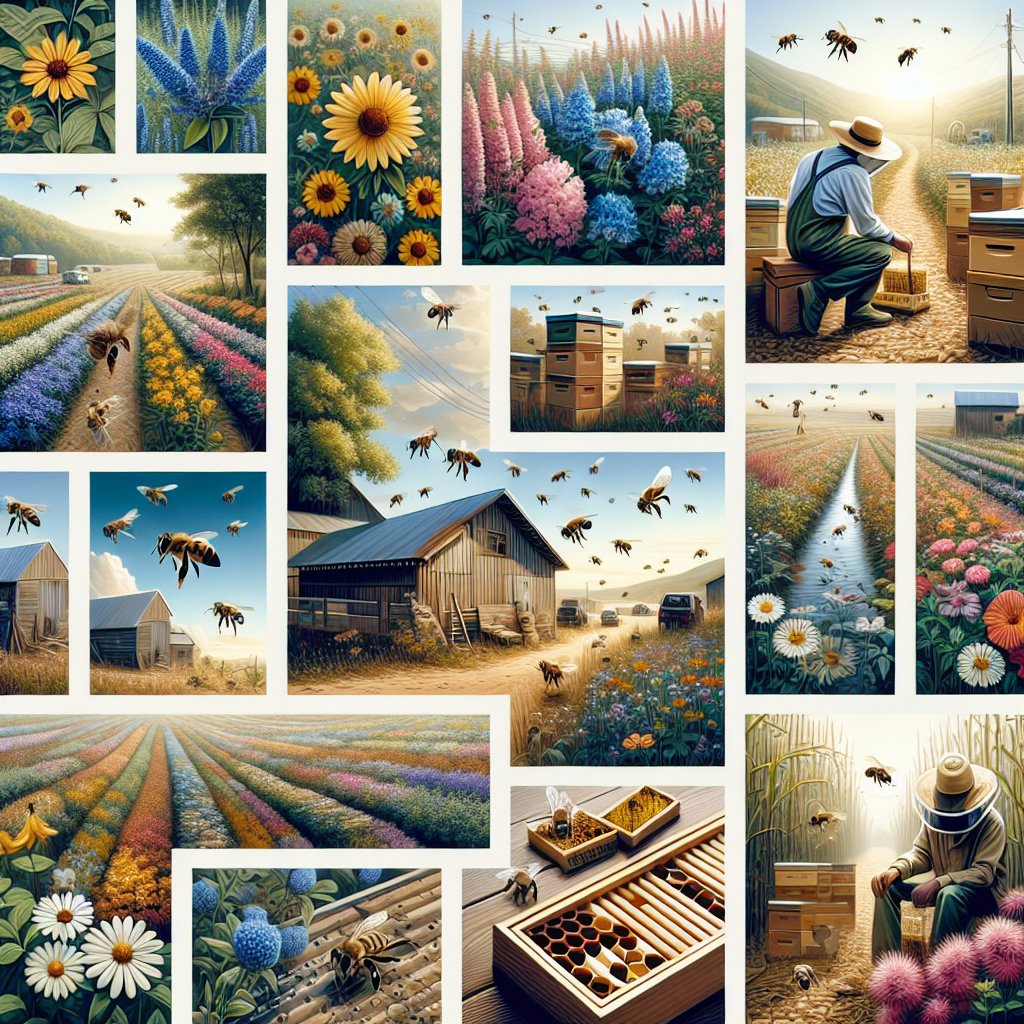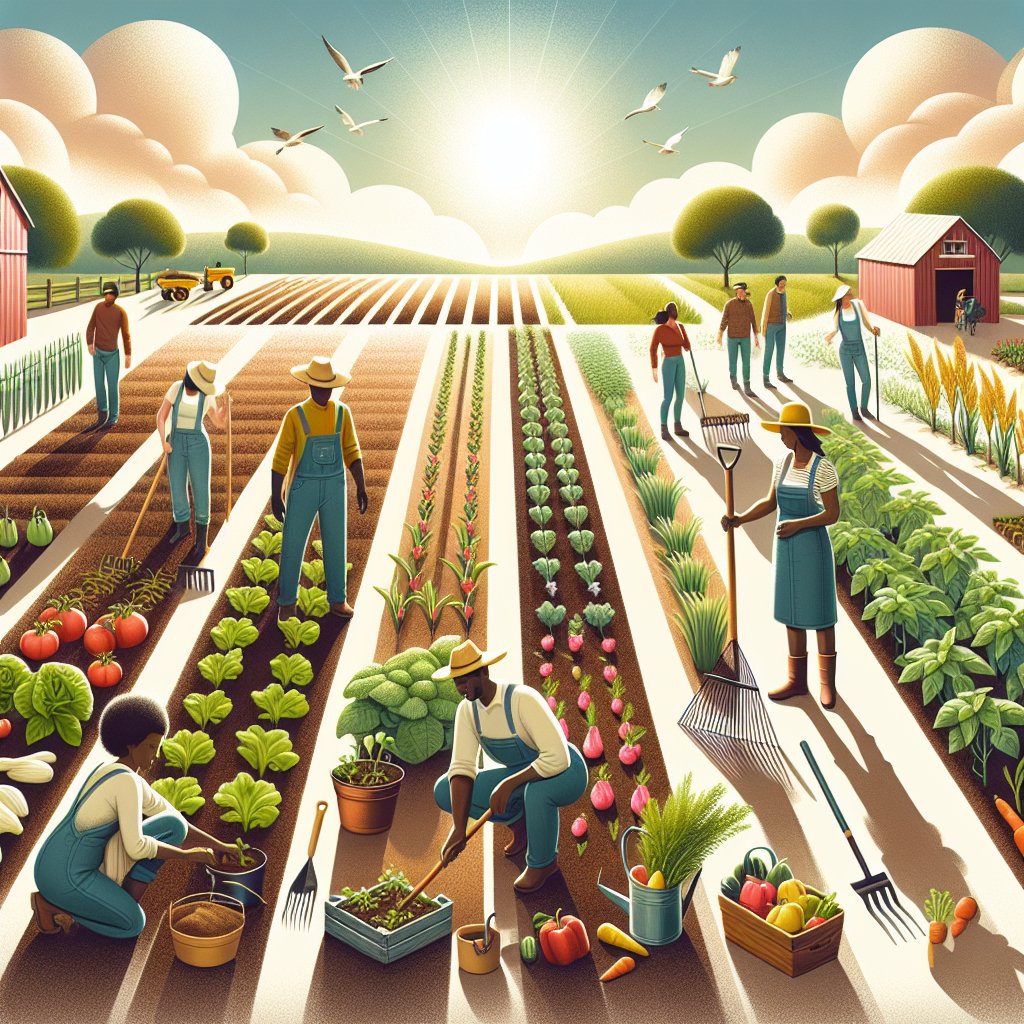
Bees play a crucial role in agriculture, and increasing their populations on your farm can lead to numerous benefits, including improved crop yields and enhanced biodiversity. This article explores various strategies and practices that can help farmers create a more bee-friendly environment, ultimately supporting the growth and sustainability of bee populations.
Understanding the Importance of Bees in Agriculture
Bees are essential pollinators, responsible for the reproduction of many plants, including a significant portion of the crops we rely on for food. Their role in pollination not only supports the production of fruits, vegetables, and nuts but also contributes to the overall health of ecosystems. By transferring pollen from one flower to another, bees facilitate the fertilization process, leading to the development of seeds and fruits.
In recent years, bee populations have been declining due to various factors such as habitat loss, pesticide use, climate change, and diseases. This decline poses a threat to global food security and biodiversity. Therefore, it is crucial for farmers to adopt practices that support bee health and increase their populations.
Creating a Bee-Friendly Habitat
One of the most effective ways to increase bee populations on your farm is by creating a habitat that supports their needs. This involves providing a diverse range of flowering plants that offer nectar and pollen throughout the growing season. Consider planting a mix of native wildflowers, shrubs, and trees that bloom at different times of the year to ensure a continuous food supply for bees.
In addition to food sources, bees need suitable nesting sites. For ground-nesting bees, leaving some areas of bare soil can provide the perfect environment for them to build their nests. For cavity-nesting bees, consider installing bee hotels or leaving dead wood and plant stems in place to offer natural nesting opportunities.
Minimizing Pesticide Use
Pesticides, particularly neonicotinoids, have been linked to bee population declines. To protect bees, it is important to minimize the use of chemical pesticides on your farm. Instead, explore alternative pest management strategies such as integrated pest management (IPM), which combines biological, cultural, and mechanical control methods to reduce pest populations without harming beneficial insects like bees.
If pesticide use is necessary, opt for products that are less toxic to bees and apply them during times when bees are less active, such as early morning or late evening. Additionally, avoid spraying pesticides on flowering plants or when weather conditions increase the risk of drift.
Supporting Bee Health
Healthy bees are more resilient to environmental stressors and diseases. To support bee health, ensure that they have access to clean water sources. Shallow dishes with stones or floating materials can provide bees with a safe place to drink without the risk of drowning.
Additionally, consider collaborating with local beekeepers to introduce managed honeybee colonies to your farm. Beekeepers can provide valuable insights into bee health and management practices, and their bees can enhance pollination services for your crops.
Promoting Biodiversity
Biodiversity is key to a healthy ecosystem and can help support bee populations. By maintaining a variety of plant species and habitats on your farm, you can create a more resilient environment that supports not only bees but also other beneficial insects and wildlife.
Implementing practices such as crop rotation, cover cropping, and agroforestry can enhance biodiversity and provide additional resources for bees. These practices can also improve soil health, reduce erosion, and increase farm productivity.
Engaging with the Community
Increasing bee populations is not just the responsibility of individual farmers; it requires a collective effort from the community. Engage with local organizations, schools, and other farmers to raise awareness about the importance of bees and the steps that can be taken to support them.
Participate in or organize community events such as bee-friendly planting days, workshops, and educational programs to share knowledge and encourage others to adopt bee-friendly practices. By working together, communities can create a network of habitats that support healthy bee populations across the landscape.
Conclusion
Increasing bee populations on your farm is a multifaceted approach that involves creating a supportive habitat, minimizing pesticide use, promoting biodiversity, and engaging with the community. By implementing these strategies, farmers can contribute to the health and sustainability of bee populations, ultimately benefiting their crops and the environment. As stewards of the land, it is our responsibility to ensure that bees have the resources they need to thrive, securing a brighter future for agriculture and biodiversity.

